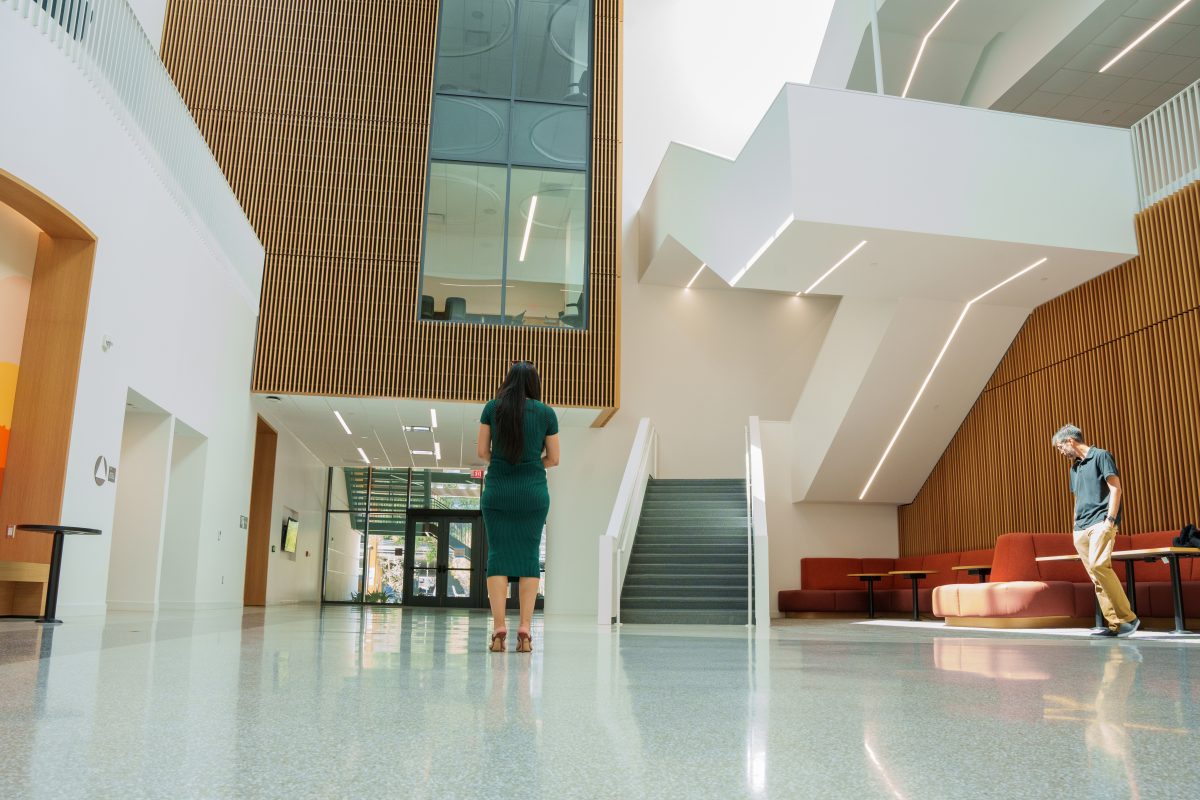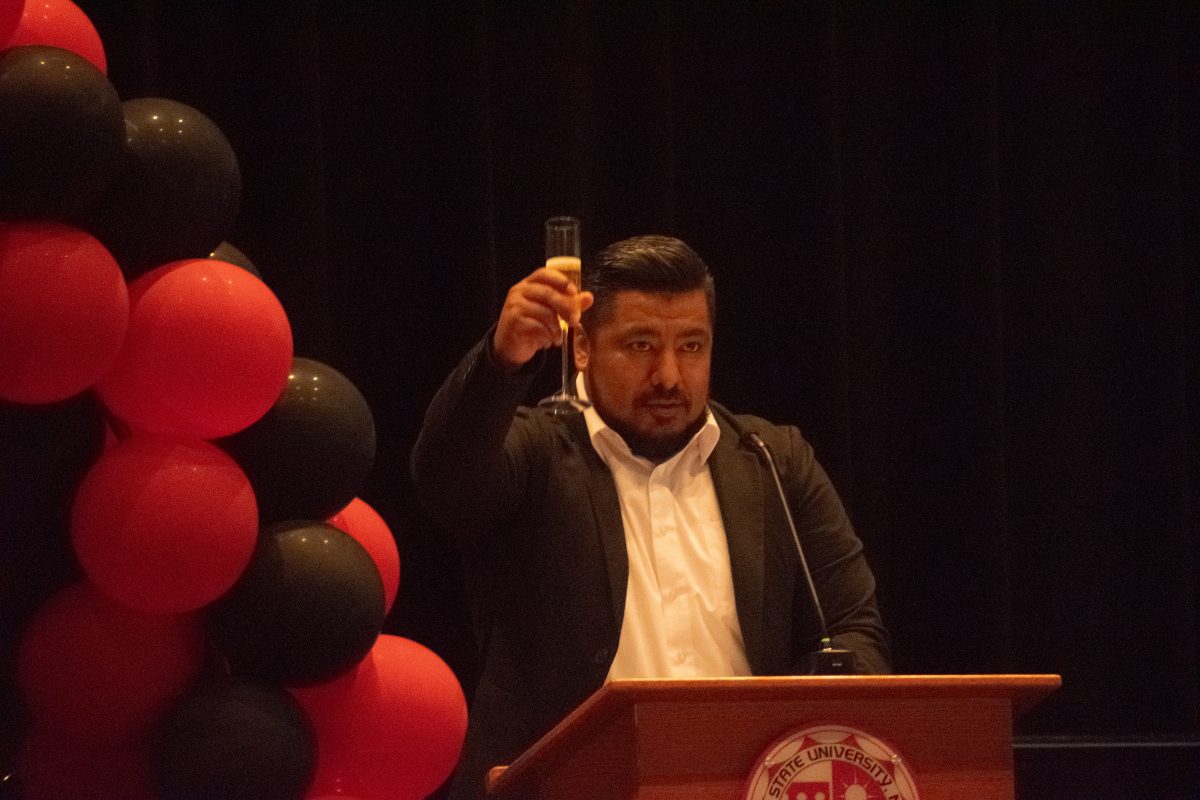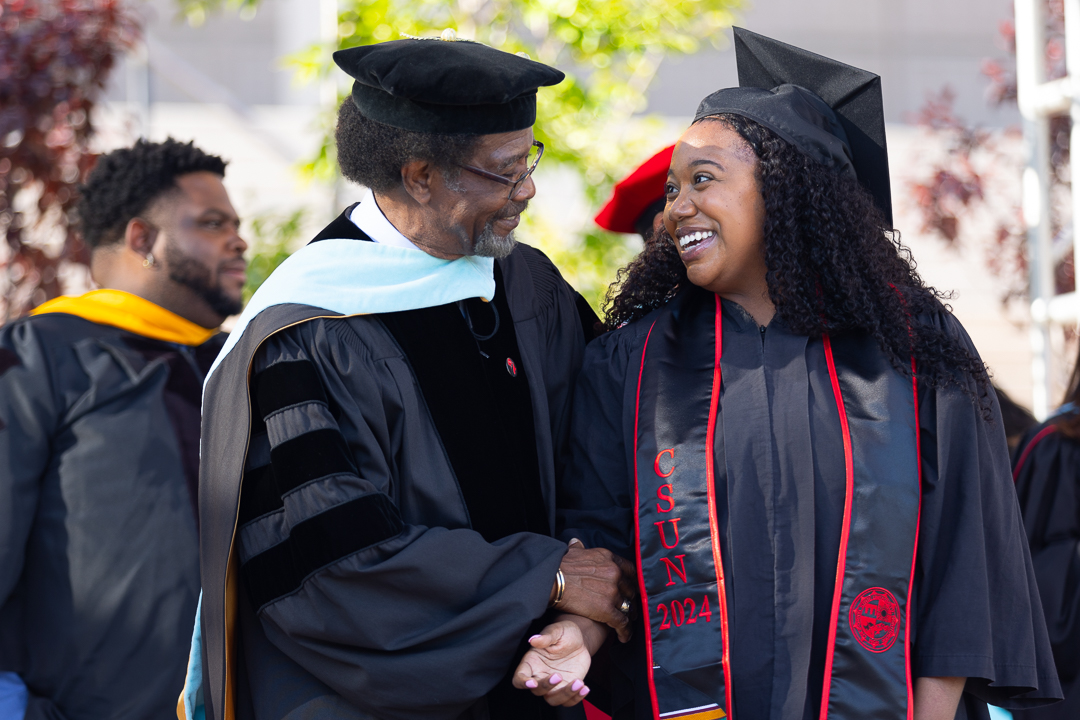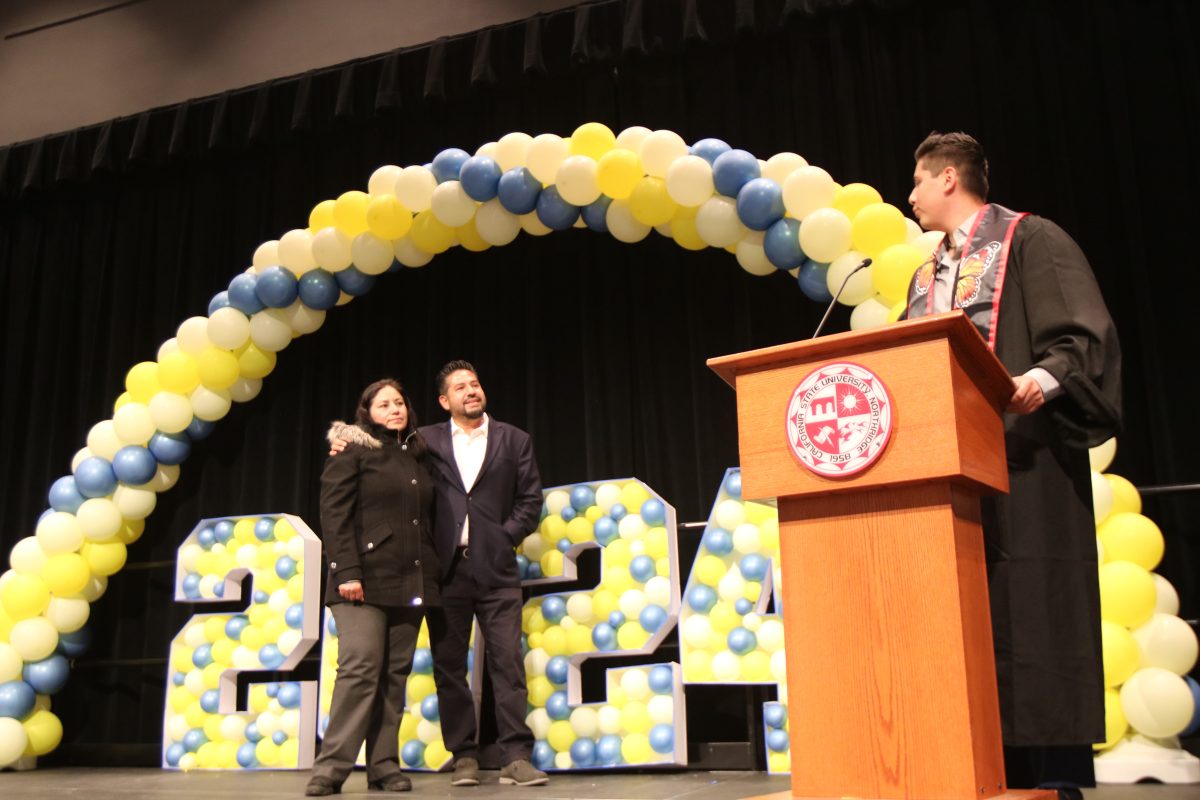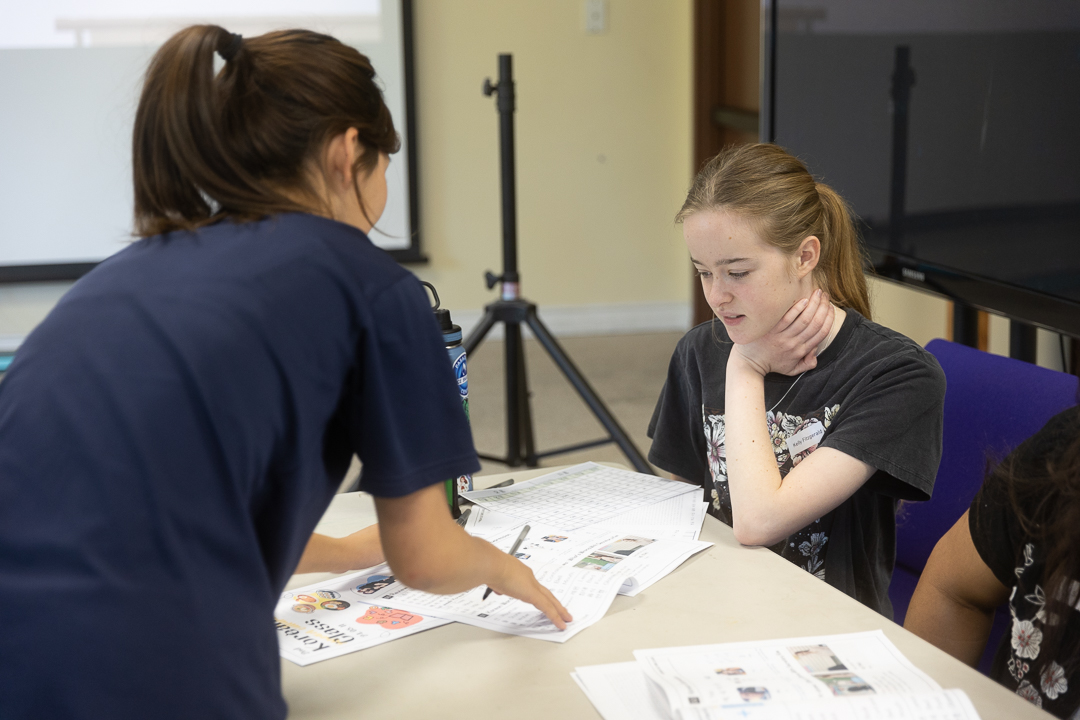By Michael J. Arvizu and Diana Jimenez
As a little boy — maybe 5 or 6 years of age — Vahram Shemmassian, a CSUN professor of Armenian Studies, remembers going with his grandparents to attend the yearly Armenian Genocide commemorations on April 24.
Placed along the stage during those presentations, he recalls, were the skulls and bones of those who had perished in what is considered to be the first genocide of the 20th century.
“People would cry. I used to look around me without understanding what was going on,” Shemmassian said. “I knew it was something sad and traumatic. But at that age, I didn’t know what was going on.”
By the time he became a man, Shemmassian grew more conscious of the genocide. He started asking questions. He became a researcher and today is able to perceive the depth of the “tremendous tragedy the Armenians went through,” he said.
“Every single day as I grow older, I see the depth of this tragedy,” he said. “You grow and mature as you are in the field.”
By the time the genocide ended in 1917, over 1.5 million Armenians had lost their lives at the hands of the Turkish Ottoman Empire.
On Saturday, the CSUN Armenian Studies Department hosted a conference focusing on the Armenian Genocide in an effort to raise awareness of the historic event. Most who attended the conference were older generation adults, many who had relatives that survived the genocide.
“I have this burning desire not to let this be a dying language nor a dying culture,” said Sara Chitjian, 81, whose parents survived the genocide. “I want us to be more recognized — not only for the genocide but I want something done about it.”
Chitjian has spent the last 20 years translating and digitizing her father’s papers into English.
The conference, titled “The Armenian Genocide: Accounting and Accountability,” featured a variety of panelists who expressed their scholarly works that spoke to different events that took place during the Armenian Genocide. Each of the four moderated panels revolved around a common theme such as language, teaching the genocide, those who were forced to assimilate, and legal responses to the genocide.
Each panel featured four or five individual speakers who each introduced an idea or scholarly work based on that theme.
“It’s obviously very important. It helps brings awareness,” said Shant Yeretzian, a junior animation studies major. “Even though I’m Armenian, I’m sad to say I don’t really know much about my culture, so I hope to know more about today.”
As the 100th anniversary of the genocide approaches in April, the panelists shared the common idea that the Armenian Genocide needs to be acknowledged because of the innocent lives that were taken.
“The topic of the Armenian Genocide deserves more awareness, and maybe that can prevent future genocides,” said Hasmig Baran, an Armenian Studies professor at CSUN, who was among 13 panelists who participated.
Dr. Elyse Semerdjian, director of Global Studies from Whitman college, during the panel themed “Those Who Were Forced to Assimilate,” in her talk, titled “The Girl With the Cross Tattoo: Field Notes on Crypto-American,” spoke of the practice of women receiving tattoos during the genocide.
According to Semerdjian, during the Armenian Genocide, some girls and women received tattoos by the Turks as a sign of possession. Armenian women were also forced to convert to Islam, and that would be the only way they would survive during the Genocide.
Khatchig Mouradian, the editor of Armenian Weekly, speaking during the same panel in his talk titled “Un-Hinding the Past: Myth-Making and the ‘Hidden Armenians of Turkey,’” expressed the importance of Armenians staying true to their roots and not being ashamed of expressing their identity.
Mouradian told the story of a little boy grandmother who survived the Armenian Genocide. Today, how he goes to his local Armenian church and picks up trash every week. Mouradian states that this is a way the little boy connects with his Armenian roots.
“Worldwide, the Armenians are commemorating with new zeal, with new drive, in order to bring the attention of the world to his horrible crime against not just the Armenians, but against humanity,” said Vahram Shemmassian, CSUN Armenian Studies professor. “Because the Armenians are part of humanity, so this is considered a crime against humanity.”
Panelists spoke of death marches, the fate of captive Armenian Genocide survivors, Armenian women and children during the genocide, Armenian Genocide education in schools today, and language, among other topics.
“No matter what the topic is, there is an intrinsic value in knowing history in an accurate way,” said Levon Marashlian, a professor of history at Glendale Community College and panel moderator. “In the Armenian case, it becomes doubly important, because there’s an official government denial.”
Armenian Studies student Aleen Arslanian stated how she feels this event affects her as a student.
“I feel that this event can help educate the Armenian youth in order for us to keep the memory of the Armenian Genocide alive for future generations to come,” she said.
From 12:30 to 3 p.m. on Feb. 5, there will a silent protest in front of the Oviatt Library in commemoration of the Armenian Genocide.

